[Wanderlust Tips January issue 2018] We cycled through 4 countries in our honeymoon journey, but the Southeast Asia still has many secrets waiting to be discovered.
[rpi]
MYANMAR – EVERYTHING HAS A SOUL
Myanmar seems to want to knock down my cycling enthusiasm because of the poverty and scorching heat, but its beautiful architecture and poor but kind-hearted people made us want to stay longer. The capital Yangon used to be a fishing village called Dagon, with Mon minority people living around Shwedagon Pagoda that dated back from the 11th century. The most sacred Shwedagon Pagoda of Burmese Buddhism, located on Singuttara Hill, was built over 2,600 years ago and is the oldest stupa in the world. Many groups of indigenous people wearing colorful clothes flock to this sacred place and kneel on the floor to pray.
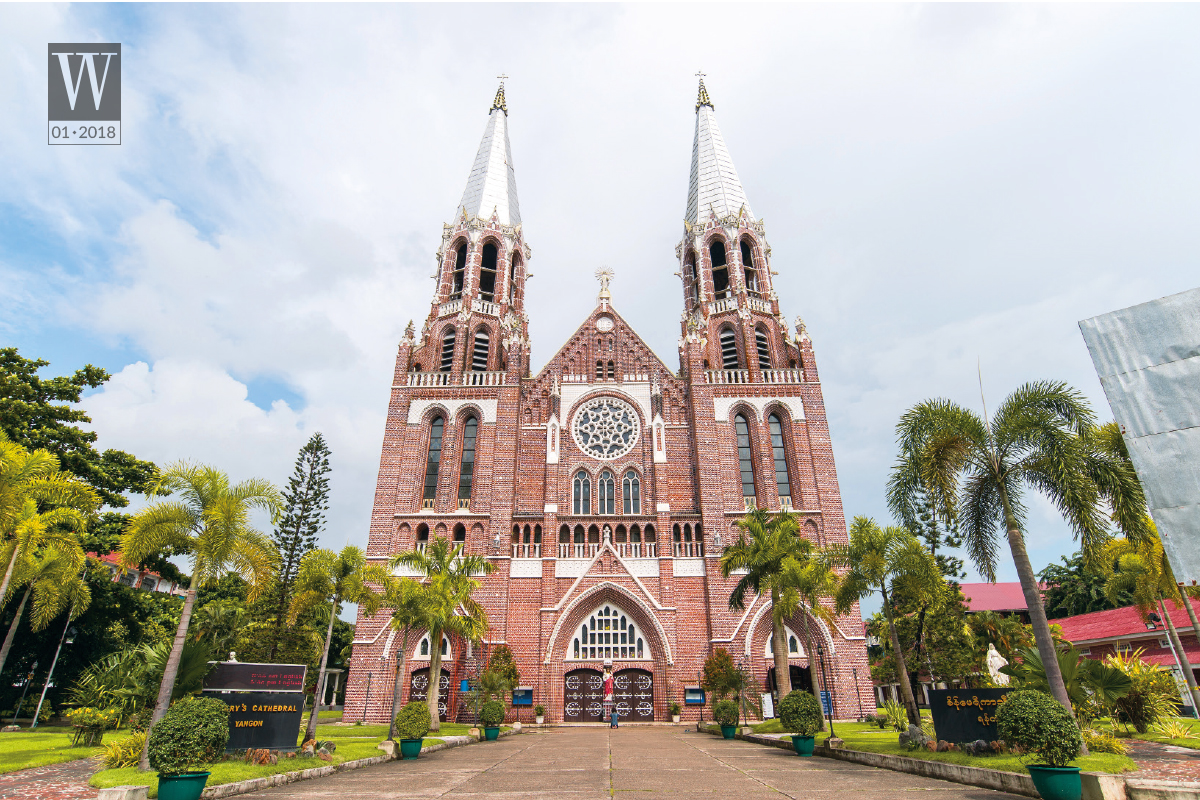
Personally, I felt nostalgia for St. Mary’s Church at the corner of Bo Aung Kyaw Street in a quiet setting that reminded me of the Church of Our Lady in Saigon. Small alleys with yellowish walls were full of green moss. Modern apartments were filled with advertising panels. Betel nut shops were always crowded with people. The girl selling grilled corns wearing a pink blouse and thanaka powder on her face, bought out the time to sew clothes at a street corner. Yangon is a vivid picture with a mix of old-fashioned and modern colours, a blend of richness and poverty.
Travelling by bicycles gave us the opportunity to explore places we would have never gone to if going on a tour. Heading to Bagan, we took advantage of the time to visit the old Pyu city that was a few kilometres to the east of Pyay city. This was evidence of the prosperity of the Pyu kingdom for over 1,000 years. But now, only walls covered in green moss and trenches in a dry land remain with the excavated items in the museum. Wandering to discover the tower shaped like an upside down jar, we saw a group of Burmese farmers painstakingly planting rice on the paddy field full of water. Under the cool canopies of a giant old tree, a farmer herded the buffalos into the pond for bathing, which suddenly made me homesick when being reminded of Vietnamese villages.
A great gift we received in the land of Buddhism was the experience of flying on a hot-air balloon in the ancient city of Bagan. In the early morning, we were picked up at the hotel to go to the vast field crowded with people, and hot air-balloons were pumped with gas. As we flew high into the sky, we saw first lights of the dawn beginning to appear on the horizon, colouring the Irrawaddy river gold before pouring down on thousands of temples looming amidst the trees and fields.
On the way riding to the docks at dawn to take the boat from Bagan to Mandalay, both sides of the river were filled with houses built from palm leaves and bamboo on the white sandy strips, clothes flying on the hanging rod under the bright sun. Then the sunset coloured the river and glittered the towers on the shore with a golden colour, which signaled that the ship had landed at Mandalay.
An unforgettable memory of our crosscountry cycling trip in Myanmar was an experience of a dust storm on the 85-kilometre journey from Kyaukse to Ywangan. When travelling by bicycle, whether it was sunny or rainy, or even when I wanted to sleep, I still had to take my packback and go on with a tired face. Leaving Kyaukse at 5.30 am when it was still dark, we had to use a flashlight to light the road. The truck rumbled on the road through the dust. When arriving at Han Myint Mo town, we turned left to Zay village which was quieter and had less dust. The dawn looked so breathtaking. After cycling around 35 kilometres by 8:30am, we stopped at a restaurant by the road for breakfast.
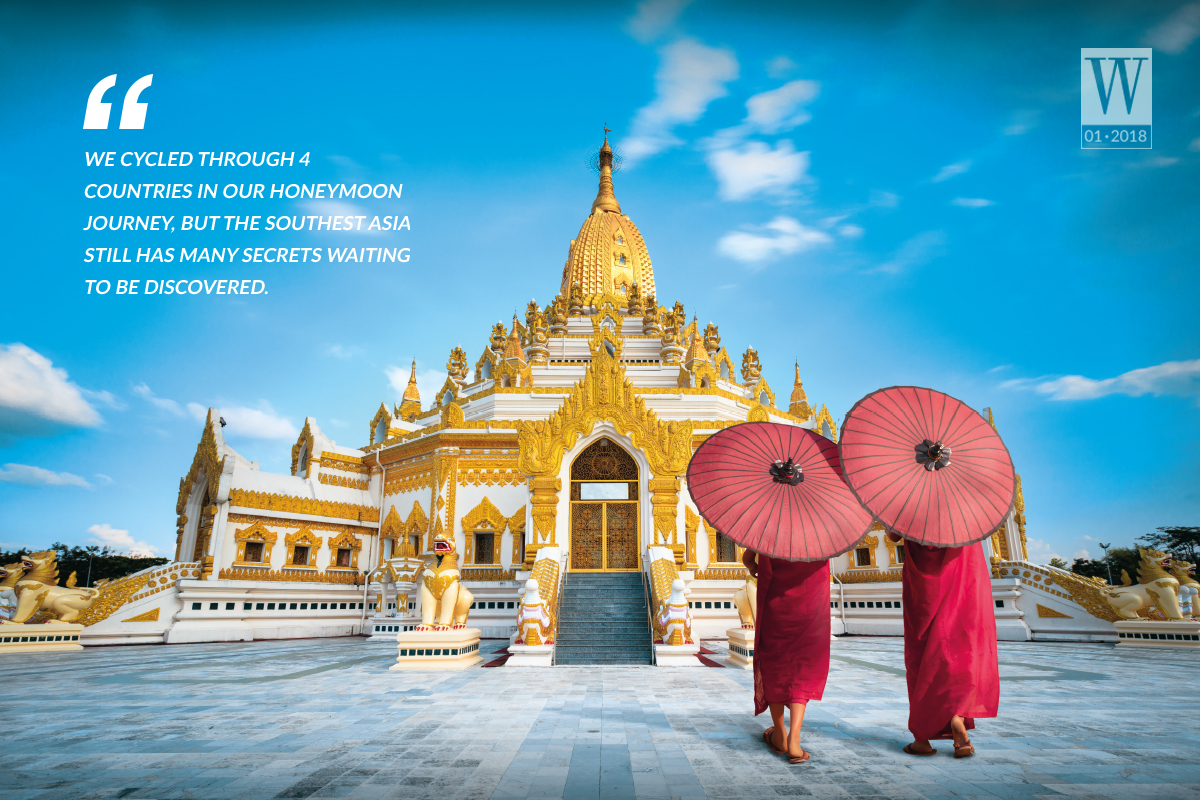
After cycling more than 10 kilometres on a dirt road under construction, I stopped to think. We would need to ride 19 kilometres more to our intended destination and it would take a few hours; however the road was so dusty and we were riding against the wind, so the amount of energy we spent was three times more than usual. Looking at the dry trees under the scorching sun surrounding us, I decided to hitchhike while my companion was still stubborn with his decision to continue riding. After hitchhiking for a while, a line of vehicles stopped on the dirt road to wait for 3 cranes to build a pass through the mountains road. Nearly 90 minutes later, the line of vehicles started to move in order, stirring a minor dust storm. When we crossed a dirt road corner, the rock and soil collapsed, and the cloud of dust blocked our vision. I just clung to the edge of the car and breathed a sigh of relief when we went down the mountain safely. The car continued to run straight on the road, making me feel doubtful, so I took the phone out and told the person sitting next to me the name of the town I wanted to reach. Then the driver stopped at an empty road, gave a signal for an apology because I had to go back quite a distance.
I hurriedly loaded my belongings on the bike, and then cycled as fast as I could. My legs trembled with hunger and anxiety when there were no people around; I grabbed a cake and rushed to the bike immediately. After nearly an hour of cycling to the town, I arrived at a hotel and felt really nervous for my companion. At 4pm, he appeared with a lot of the dust on his clothes. It turned out that he had to stop cycling and wait for the mountain to be blasted to build the road. Worried that he might not make it down the mountain before dark, he hitchhiked. They stuffed him and his bike into a trunk, and as a result, he was injured at the ribs by his bike. He said with regret: “From now on I will never let you hitchhiking alone again. I will listen to you.”
We were fortunate enough to blend into the crowd of people dressed in festive clothes in Ywama city. We were surrounded by music, dancing, and boys riding horses on their way to the pagoda. That evening, in the gentle candlelight, we watched the movie The Child of the Lake and enjoyed French cuisine to make up for the struggle in the land on the day. Sitting on the boat drifting in the middle of vast Inle Lake and exploring the life of indigenous people really made me fascinated.
MALAYSIA – THE LAND OF MIXED CULTURE
Malaysia became an ideal place for us to change the atmosphere of the trip after we had visited a lot of temples in Myanmar and Thailand. Penang, “Pearl of the Orient” in May looked so brilliant with blue sky and golden sunshine in the morning, but in the afternoon, the weather suddenly changed with rain pouring down. Penang island was quite large, ancient yet modern.
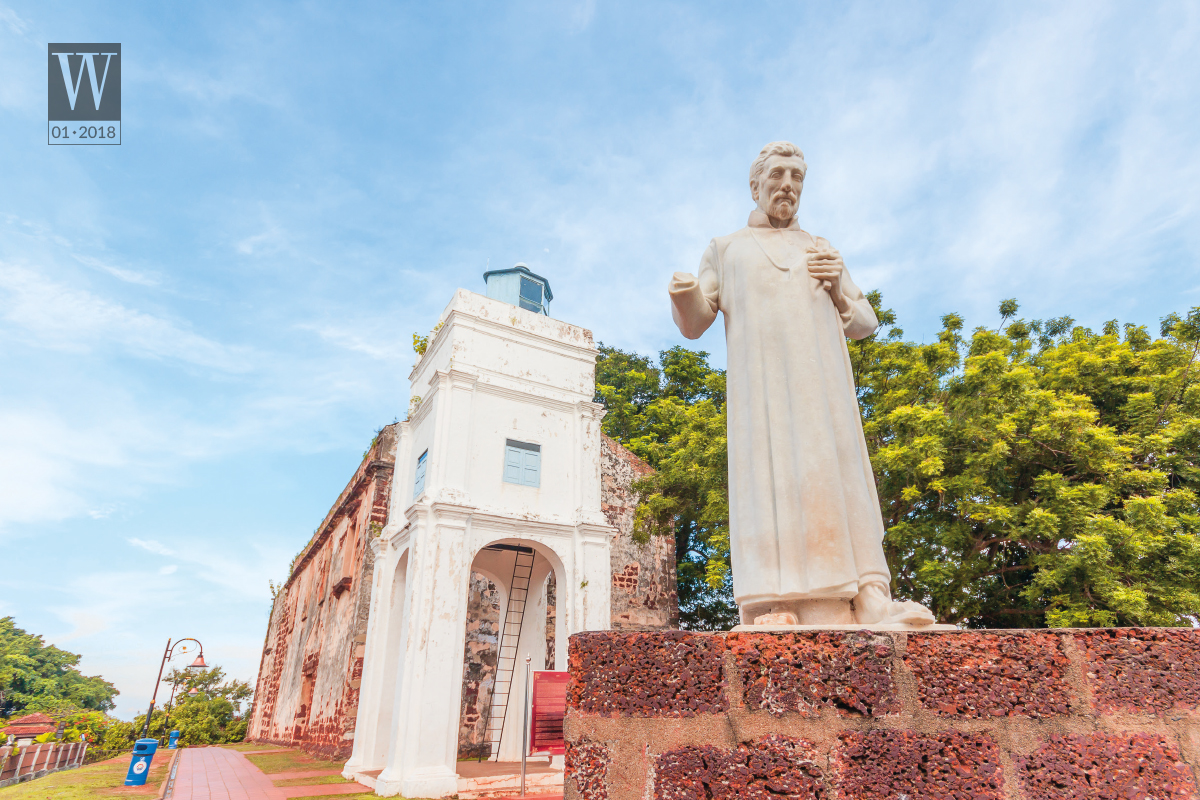
We stayed at the Little India Heritage Villa in the heart of George Town, a UNESCO World Heritage Site in 2008. This city truly fascinated me with all kinds of European-Chinese- Indian structures. Churches and pagodas produced a pleasant visual combination. The city impressed me with the street art search. Murals were present randomly all over the place, but most concentrated on Ah Quee, Pitt Street and Armenian Street. There were a lot of people carrying cameras to seek frames, then cheering up when they found a picture on the wall. And after taking photos, they showed others different effects when they took photos in various directions.
Melaka is a blend of Portuguese, Dutch, English, Indian and Chinese architecture. Particularly, this place was prominent with elaborately carved temples and pagodas of the Fujian people such as Cheng Hoon Teng, also called the Blue Cloud Temple, Malaysia’s oldest temple worshiping Confucian, Taoist and Buddhist; the white Kampung Kling Mosque with deep blue-green tile roofs; and the magnificent Sri Poyatha Moorthi Temple – the oldest magnificent Hindu temple of the country. All three architectures are located in the “Harmony” road as a way to discreetly identify themselves as indispensable pieces of art in an ancient city. On the Johner Walk in the heart of the night market, careless locals blithely gathered on a karaoke stage despite the crowd of travellers, most of whom were Asian, passing by. There was something very peaceful in Melaka: old street corner with faded yellow colour and lanterns reminding me of Hoi An; the roads with colourful one-story buildings reminding of Penang.
In the midst of the atmosphere of ancient buildings close to each other, I walked up the hill of St. Paul to visit the church of the same name built in 1521, the oldest church in Southeast Asia. Only ruins remained with the flaky-skin wall, and the statue stood silently at the top of the hill. Stone tombs carved with the names of the Portuguese still silently lay there over time. We rushed out of Malaysia on a drizzly morning in the weekend to facilitate cross-border entry in our nostalgia for the land of various cultures.
SINGAPORE – SURPRISED ON THE DAY BACK
In the weekend, when the immigration area was sparse, Singapore welcomed us with pouring rain that made us rush to wear raincoats but still get wet. We followed the bicycle lanes, cycling through the green grass covered road. Then we travelled along the jungle path, and sometimes we had to walk the bikes through narrow treks. We spent time wandering through ancient Chinese street, Arab Street with magnificent churches, and then visited India street filled with the colours, patterns and, fragrance of decorative cloths, soothing the muggy air.
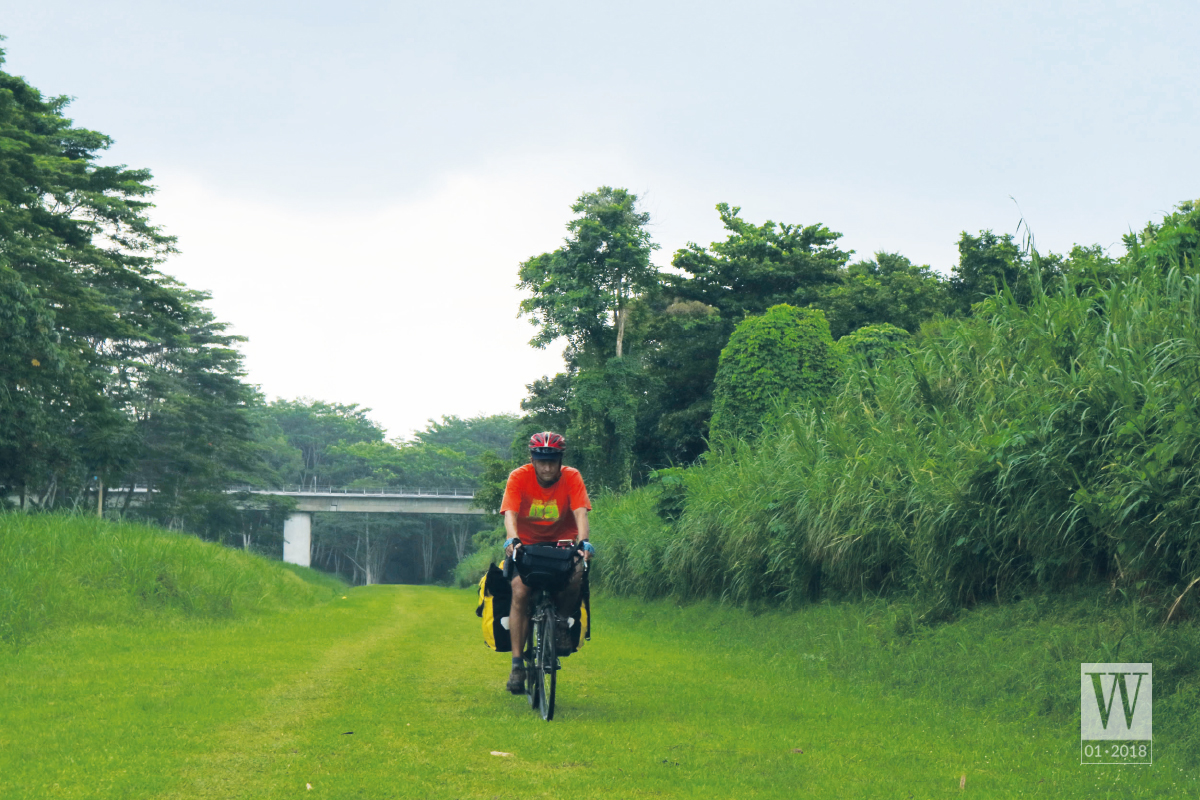
Arriving in Singapore, I did not forget to visit the Marina Bay to admire the Merlion’s iconic status and the ecological garden, then took a walk in the financial district full of high buildings and banks’ advertising boards as if showing off the development of this island. However, in that moment, the ambitious career path could not interest me because I am now happy on an endless journey.
The most interesting thing in Singapore during this visit was to watch the wildlife on Safari at night that was quite far from the city centre. Although it was a weekday, there were still plenty of visitors to Safari. The forest has no wind or mosquitoes, so I regretted wearing too many clothes to avoid them. Wild animals hide in the dark like playing hide-and-seek with visitors, sometimes they make people whisper when discovering a huge black shadow moving under the trees.
INDONESIA – ENCHANTING ISLANDS
After 36 hours sailing from Singapore to Jakarta, we arrived at the harbor at midnight with an anxious mood since we had to ride the bikes for a long distance in a large area, then hurried to find accommodation because we did not book any place in advance. Early on the next day, both of us were shocked to hear that the capital had been terrorized. We stayed in Jakarta for two nights and then started exploring Java island.
Jogja, the ancient city of Javanese people, is a must-see attraction for tourists. We visited Borobudur, the world’s largest Buddhist temple dating back to the 9th century. It is a large 9-story temple built in Mandala architecture, a Hindu and Buddhist symbol representing the universe with 504 Buddha statues built under the reign of King Sailendra. Prambanan, the largest 240-temple complex built in the 10th century, which is dedicated to Shiva in Indonesia, is also not to be missed.
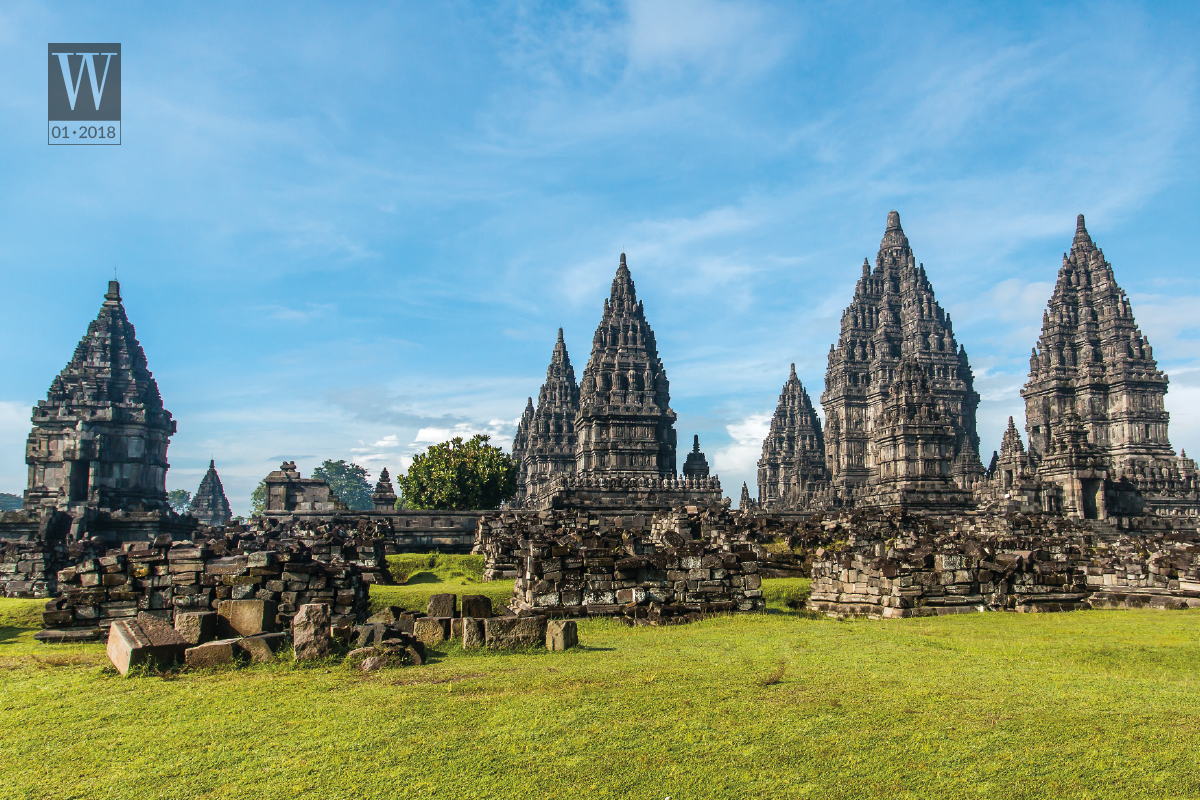
Java island also left me a great memory when we conquered volcano Ijen. On the way up there were cliffs on one side and abyss on the other sides, I turned around to look at the large and brilliant moon gradually appearing behind the trees. In the dark, I could still see the deep green cloudy mountains and the thin branches of the tree. After passing a steep soaring slope, I sat down on a collapsed tree and looked ahead. The cool air of the late night filled my chest. After that, I walked again and found a place where a crowd was gathering. The flashlight occasionally sparkled when people took photos, in front of the hauntingly green flame burning in the darkness of the night.
Nevertheless, the sunrise hunting that day failed because dark clouds covered the sky. Everyone waited for the dissipation of the darkness, then went in the opposite direction to see the crater when the air got thinner. Then the sunlight came out, but the tip protruding from the crater had not reached the light, making everything look like a fantasy world. It turned out the ghostly green flame I saw last night was at the location where a huge smoke emitted, covering the mouth of the green lake.
Leaving Java, we spent half a month in Bali; it was the time when I was immersed in the enchanting and unique culture of this lovely island. On the day of the full moon, the island became vibrant in the traditional colors, music, and the festivals of fishermen living around the temples on the sea. We cycled around unnamed villages on the tourist map, admiring the girls who sprinkled flowers and prayed right in front of the elaborate and artistically decorated gates as well as the stone-paved village road.
Amed is a coastal village with its back leaning on the forest and its front having sufficient thoughtful services for visitors. We strolled into the village admiring Amed’s scenery which looked like Vietnamese countryside with green bamboo trees, and the children hid behind a banana tree watching strangers then laughing.
The beach has only one simple but stylishly decorated restaurant, which is always crowded with visitors coming to lie and watch the moon, stars and Argung volcano rising high in the sky. As the sun rose, we went snorkeling to explore the underwater of Amed Sea. I was amazed to see my companion bending forward and rolling over in the water, creating a spectacular chaos of foam amidst strange sea creatures passing by. We spent the last night in Amed watching the sunset together and walked on the sand in the midst of the continual sound of waves.
Leaving Amed village, we only had to cycle 16 kilometres up the mountain slope to Tirtagangga – the unique water garden. Wandering for a while, we found the homestay Pondok Lembah Dukuh which was located at an extremely convenient location. We drank warm tea and watched the fluttering palm trees with flying birds while a Bali farmer was busy working on the terraced fields in the midst of the falling rain and clouds covering the sky and mountains.
Ubud is a unique cultural centre with streets close to each other. The doors of every house or temple are elaborately decorated, and most restaurants have the God of Fortune as a prayer for luck. We followed the paths on the map to fields and gardens, then hiked and walked through green terraces. The last day before leaving Ubud, I visited the market; the most interesting places were flower stalls, as this was the item that every Bali mother bought to prepare for their unique religious ceremony every day.
Different from Ubud, Kuta echoed vibrant young rhythms. With a bottle of Bintang beer and fresh fruit, I lay on the Kuta beach watching the surfers and the bright golden sunset on the waves. After 154 days of honeymoon journey through eight Southeast Asian countries, I realized that happiness in a peaceful home is what I need to pursue. Ngan! It’s time to go home.
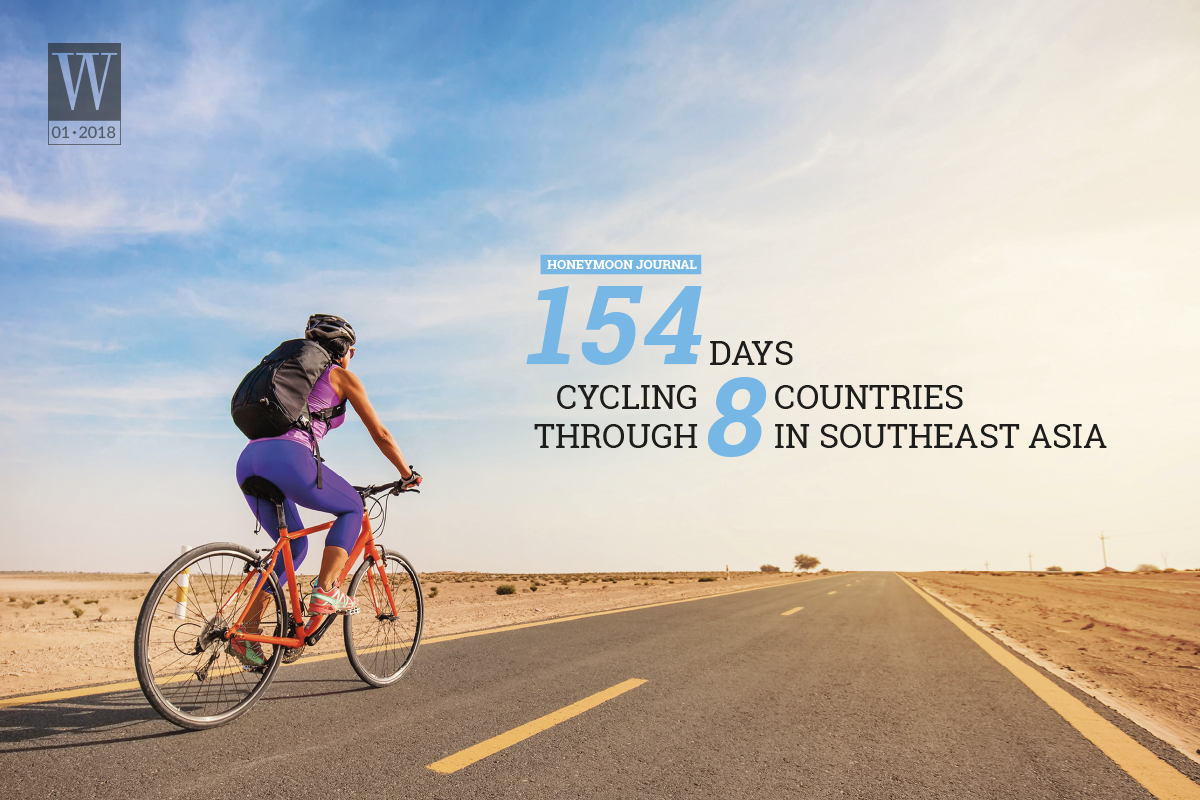
W.TIPS
I applied for a Myanmar visa to stay in the country for 28 days; after two days it was approved and I was charged USD44. The procedure was really simply, you just need to fill some necessary information in a form via the website. Onland entry is relatively easy; you would not be harassed and asked for financial proof. It is recommended to avoid Malaysia-Singapore border on weekdays during peak hours because there will be a lot of Malaysian people entering Singapore for working or returning home.
USD35 per day for two people. Visitors should buy travel insurance against unforeseen circumstances. In the case of a budget deficit, (for example, when traveling to Myanmar, it costs you so much to stay in the hotel), you need to sleep in tents in the following countries to balance the expenses. In Myanmar, in addition to the regulation that tourists must stay in the hotel registered for foreigners, in some areas, civil war is happening, so it does not allow strangers to approach.
Some temples in Thailand and Myanmar have separate areas where females are forbidden, and women are not allowed to enter the temples in Bali island when they are menstruating.
When you go to Singapore, you should visit the China, Indian and Arabic streets to admire the differences between many cultures and enjoy their unique cuisine.
The night market in Malaka Heritage City which opens at the weekend is really bustling, especially for Chinese and Malaysian dishes. If you know Chinese, you should prepare some songs to sing with the indigenous people. They prepare stages for everyone to sing karaoke together. Their cuisine is also special, it is a mix of Chinese and Malay flavour. You can try Nasi lemak and Laksa noodles. Indonesia, especially the Jogja city is where visitors are always ready to open their purse to choose a Batik colorful embroidered dress or paintings. Also, the unique culture in Bali will make your experience in Bali unforgettable and the souvenirs in Bali will make you remember this island forever. Do not forget to try Gado-gado, a simple vegetarian dish featuring Indonesian culture. In Ubud, Bali, whether it’s a market or any luxury boutique, it is recommended to bargain down to a third of the price.
Kim Ngan | Wanderlust Tips

